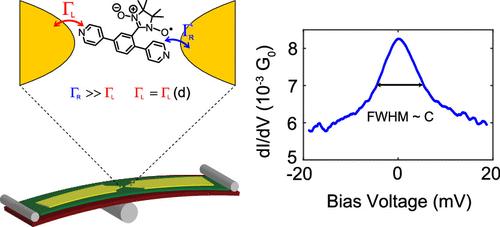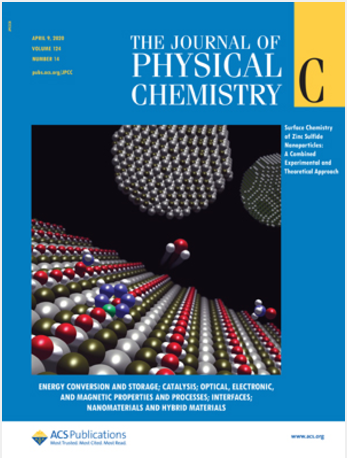Mechanically Stable Kondo Resonance in an Organic Radical Molecular Junction
IF 3.3
3区 化学
Q2 CHEMISTRY, PHYSICAL
引用次数: 0
Abstract
Organic radicals are promising candidates for molecular spintronics due to their intrinsic magnetic moment, their low spin–orbit coupling, and their weak hyperfine interactions. Using a mechanically controlled break junction setup at both room and low temperatures (6 K), we analyze the difference in charge transport between two nitronyl nitroxide radicals (NNR): one with a backbone in the para configuration, the other with a backbone in the meta configuration. We find that para-NNR displays a Kondo resonance at 6 K, while meta-NNR does not. Additionally, the observed Kondo peak in the differential conductance has a roughly constant width independent of the conductance, consistent with a scenario where the molecule is coupled asymmetrically to the electrodes.

求助全文
约1分钟内获得全文
求助全文
来源期刊

The Journal of Physical Chemistry C
化学-材料科学:综合
CiteScore
6.50
自引率
8.10%
发文量
2047
审稿时长
1.8 months
期刊介绍:
The Journal of Physical Chemistry A/B/C is devoted to reporting new and original experimental and theoretical basic research of interest to physical chemists, biophysical chemists, and chemical physicists.
 求助内容:
求助内容: 应助结果提醒方式:
应助结果提醒方式:


